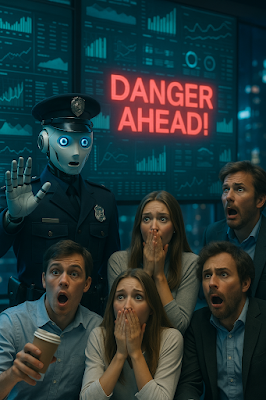🟦 Introduction – Prophecies Reimagined
“Never head south next month. Something bad will happen.”
Once, that kind of warning from a shaman could change the course of someone’s life.
Wrapped in plastic, the talisman would be handed over with serious eyes and heavy silence.
In Korea and beyond, spiritual fortune-telling traditions guided decisions on business, love, even survival.
But now, we’re in a different era.
In today’s world, AI makes the predictions.
Not through spirits, but through data.
And sometimes... it’s eerily accurate.
Instead of a paper charm, we get a push alert.
Instead of intuition, we trust pattern recognition.
This is not magic—it’s mathematical prophecy.
🟦 Main – When AI Starts Predicting the Future
🔹 Microsoft's Premonition Project
In 2015, Microsoft launched the Premonition Project.
The goal? To predict disease outbreaks before they happen, using AI.
How?
By analyzing… mosquitoes.
Yes, really.
AI processed billions of environmental data points—humidity, temperature, movement—and learned to forecast where infectious diseases were likely to emerge.
And it worked.
In areas flagged by the system, outbreaks followed.
It wasn’t prophecy.
It was prediction—with terrifying precision.
🔹 Predictive Policing – Crime Forecasting in the U.S.
Next, imagine this:
An AI system analyzes crime reports, patterns, and time slots.
Then says, “This neighborhood is a high-risk zone at 6 PM.”
Police show up—and sure enough, a crime occurs right there.
This is called predictive policing, and yes, it's been used in the United States.
Though controversial for privacy and bias concerns,
its accuracy in forecasting real-world criminal activity has left even law enforcement stunned.
The AI was right.
And it wasn’t a gut feeling. It was a database.
🔹 DeepMind Health – Beating Doctors to the Diagnosis
In hospitals, Google’s DeepMind Health scans medical records in real time.
It can predict if a patient will reach a critical state before doctors even notice.
One case?
The AI said, “This patient will be in danger within 48 hours.”
Accuracy: 94%.
That’s faster—and more reliable—than most physicians.
It’s not guesswork. It’s machine-learned foresight.
So again:
Is this prophecy…
or are we literally watching the future unfold through data?
🟦 Conclusion – Talisman or Algorithm?
Shamans believed in divine revelation.
AI believes in statistical inference.
But both say the same thing:
“Don’t go there.”
We, as humans, have always needed something to guide us into the unknown.
What’s changed is not our fear—but our faith.
From paper talismans to predictive dashboards,
we're still asking the same question:
“What will happen to me tomorrow?”
🔹 DISNAM Says:
Hilarious but true. This was DISNAM.
👉 Korean Version Blog
https://blog.naver.com/disnamedu
🎥 Watch the video version on YouTube
www.youtube.com/@DisnamEdu
👍 A like is your offering.
🔔 A notification? Your modern talisman.





Comments
Post a Comment